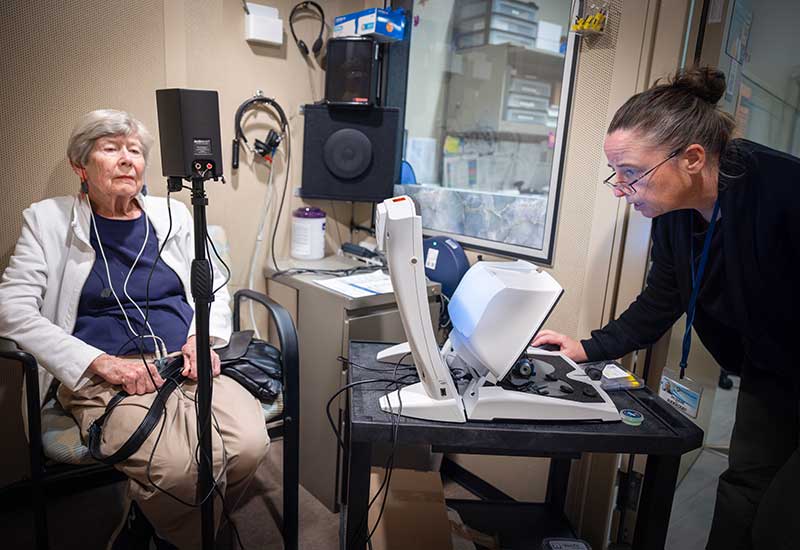What are sound-related disorders?
Sound-related disorders include tinnitus, hyperacusis and misophonia.
- Tinnitus is also described as ringing in the ears. People with tinnitus hear a sound, such as ringing, buzzing, hissing or whooshing, in one or both of their ears. There isn’t an outside source of the sound, so others can’t hear it. This condition affects about 1 in 10 adults, so it’s very common. For most people, it’s a bit annoying. For others, it can have a big effect on sleep, attention and quality of life.
- Hyperacusis is a disorder of decreased sound tolerance. This means that the brain’s auditory system is set to make everyday sounds feel too intense.
- Misophonia is a condition where certain everyday sounds trigger a strong emotional reaction, like anger, anxiety or disgust. Common sounds that people say cause misophonia include chewing, breathing or tapping. The reaction to the sounds is strong and unconscious.
What causes sound-related disorders?
Most often, sound-related disorders are symptoms of another cause or condition. They have been linked to:
- Ear injuries
- Head or neck injuries
- Hearing loss
- Loud noise exposure
How does Penn State Health treat sound-related disorders?
There is no cure for tinnitus, hyperacusis or misophonia, but the audiology experts on Penn State Health’s Otolaryngology – Head and Neck Surgery team can help reduce their effects on daily life. One method is Tinnitus Retraining Therapy (TRT).
- TRT combines counseling with sound therapy to help people with moderate to severe tinnitus teach their brains to ignore the sound in their ears. Here’s how it works:
- Counseling helps patients change the way they feel and react to the sounds by retraining their brains to become less sensitive to it. This is called habituation.
- Low-level sound therapy is used to gently make the hearing system less sensitive. Options include anything that creates background noise, such as white noise machines, fans or in-ear devices that play calming sounds.
- Patients with hearing loss may benefit from hearing aids to make external sounds louder, which hides the tinnitus sounds.
Over time, the brain learns to not focus on the tinnitus and becomes desensitized, so the sound is far less noticeable or bothersome. - TRT is also used to treat hyperacusis and misophonia. We’ll focus on understanding your symptoms, measuring your tolerance to sounds and helping you learn new coping skills.
Take the next step in tinnitus and sound-related disorder treatment
If you or someone you know is struggling with tinnitus, hyperacusis or misophonia, the audiologists at Penn State Health can evaluate the condition and create a personalized treatment plan. With the right support and tools like TRT, better quality of life is possible.
Schedule an evaluation today.
Our convenient locations
Penn State Health Audiology
Milton S. Hershey Medical Center
University Physicians Center
200 Campus Drive
Entrance 2, Suite 400
Hershey, PA 17033
Penn State Health
Lime Spring Outpatient Center
2221 Noll Drive
1st Floor, Suite E100
Lancaster, PA 17603
Penn State Health Medical Group
Nyes Road
121 N. Nyes Road, Suite C
Harrisburg, PA 17112
Penn State Health Otolaryngology
Head and Neck Surgery
Holy Spirit Medical Center
Medical Arts Building
890 Poplar Church Road, Suite 210
Camp Hill, PA 17011



